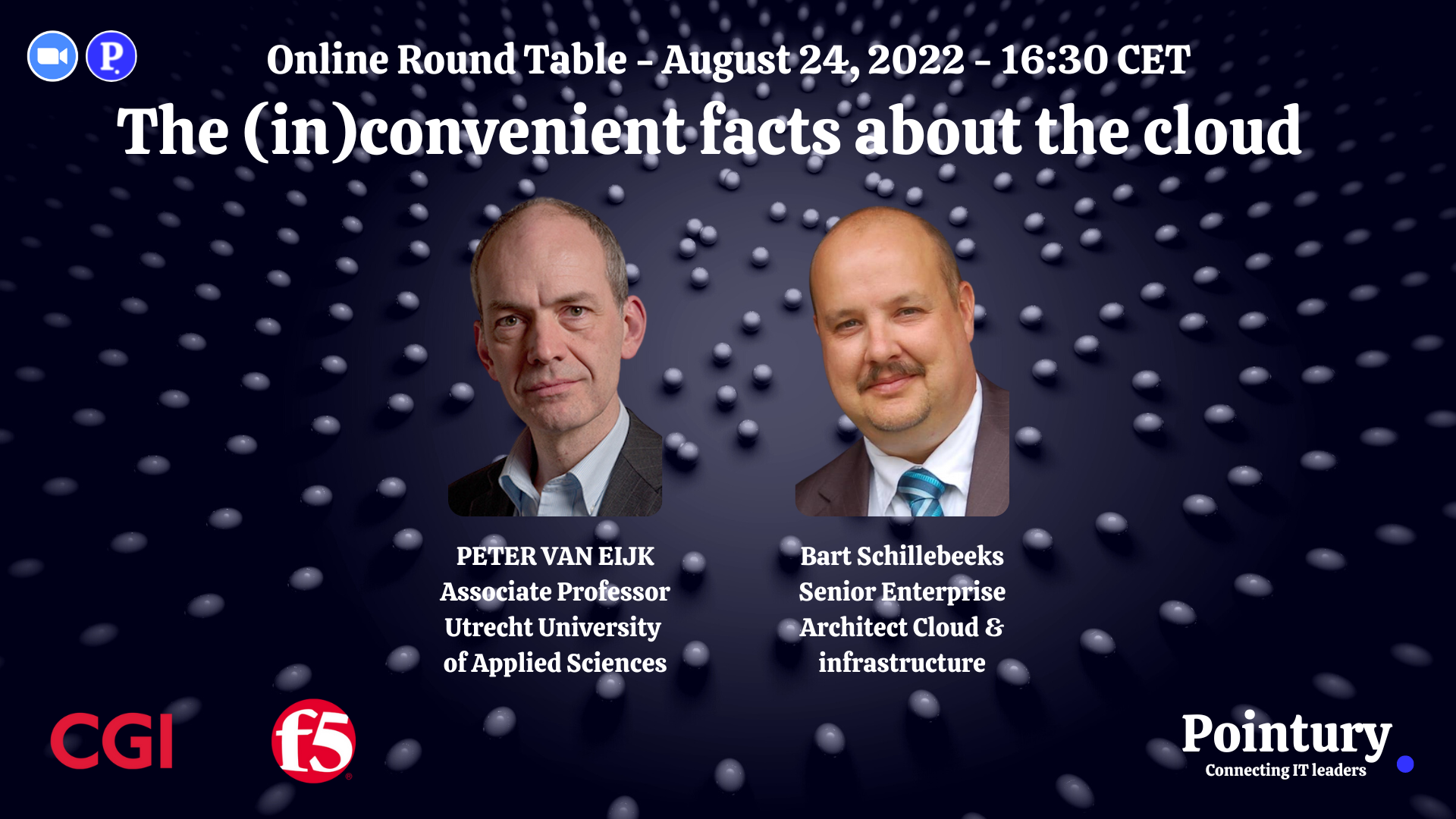DATA, GOLD OF THE 21st CENTURY
On March 3, 2022 10 digital leaders met with representatives of F5, CGI and Pointury to get inspired by DPD, GemOne and Etex on how they get value and even additional business out of data.
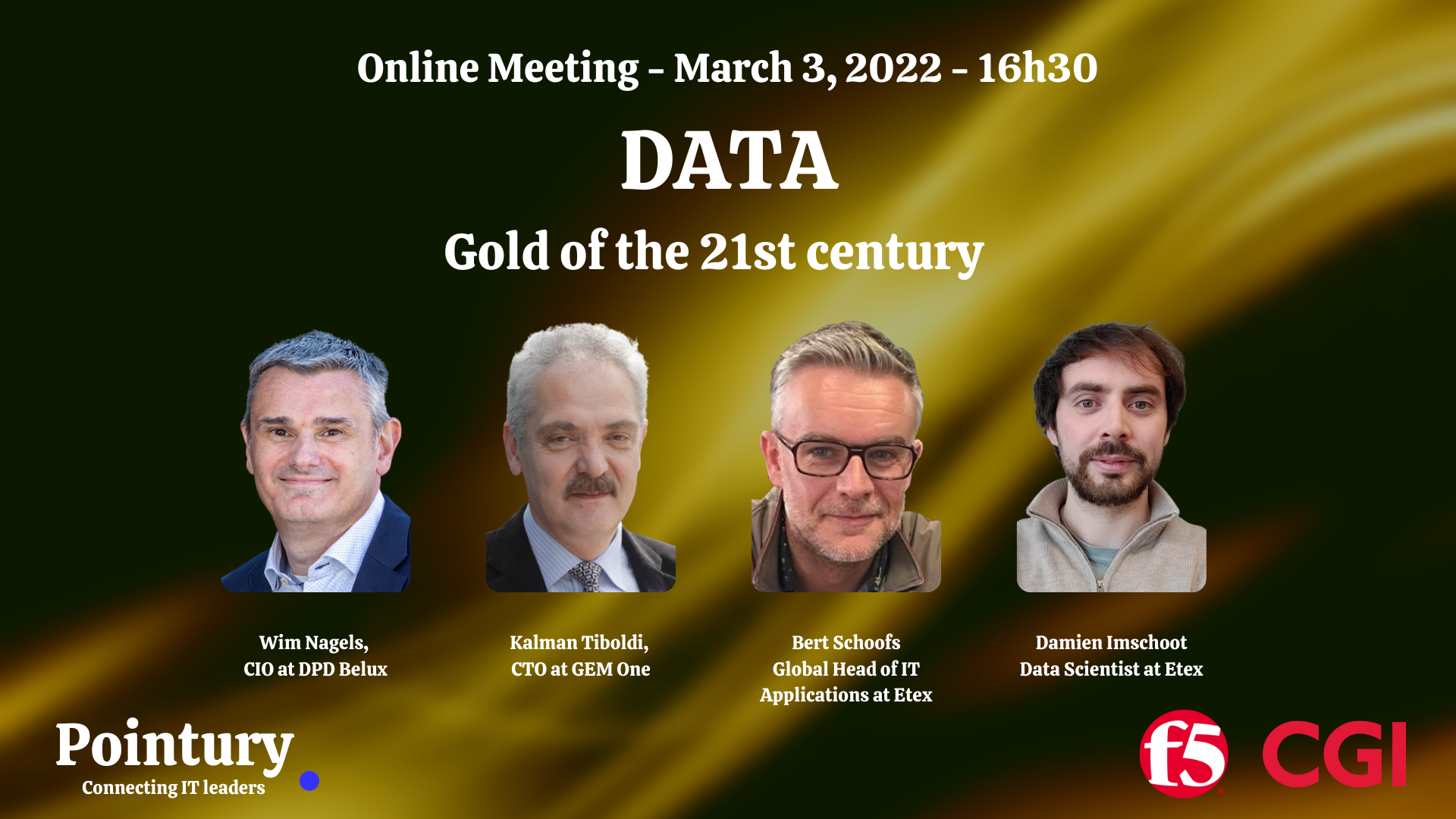
Wim Nagels is CIO of DPD Belux. DPD, a data company delivering parcels, is the third largest parcels delivery company in the world and the largest in Europe, 14,7 billion € turnover in 2020, with 2,2 billion parcels delivered in 2020. Obviously the pandemic boosted the parcel delivery business. In 2021 DPD stepped into DataCloud with the desire to have secure and GDPR compliant data in a scalable environment, with a controllable cost, and where infrastructure concerns would be a problem of the past. In 2021 DPD also started to monetise data and intends to grow that business in the next years. Data is now clearly part of the DPD Group global strategy.
DPD has the possibility to collect a lot of data and find ways to monetise it. Sensors such as accelerometers on vans, which come about everywhere every week, constantly measure air quality, road quality and 4G connectivity. Next to that DPD also has an idea in which neighbourhoods how frequent buyers are located. This data can be valuable for governments, for telco providers and others. It goes without saying that all data that is accessible is anonymised.
To give an idea of the volumes of data: the sensors on the vans of DPD Belux generate 12 million records on a daily basis while there are only about 100 thousand regular delivery records per day.

Kalman Tibodi is CTO and co-founder of GemOne, a spin-off company of TVH. It started in 2016 with the development of a telematics solution for rental equipment, yet soon it became clear that these developments could be useful to other companies as well. So only 2 years leader GemOne did spin off from TVH with the vision is to provide global telematics solutions to help its customers maximise the performance of machines of any make & model, using advanced digital technologies. At this moment GemOne already has more than 70 thousand connected assets. This provides a lot of input for different aspects of fleet management such as security and safety, operational efficiency, service and maintenance and track & trace.
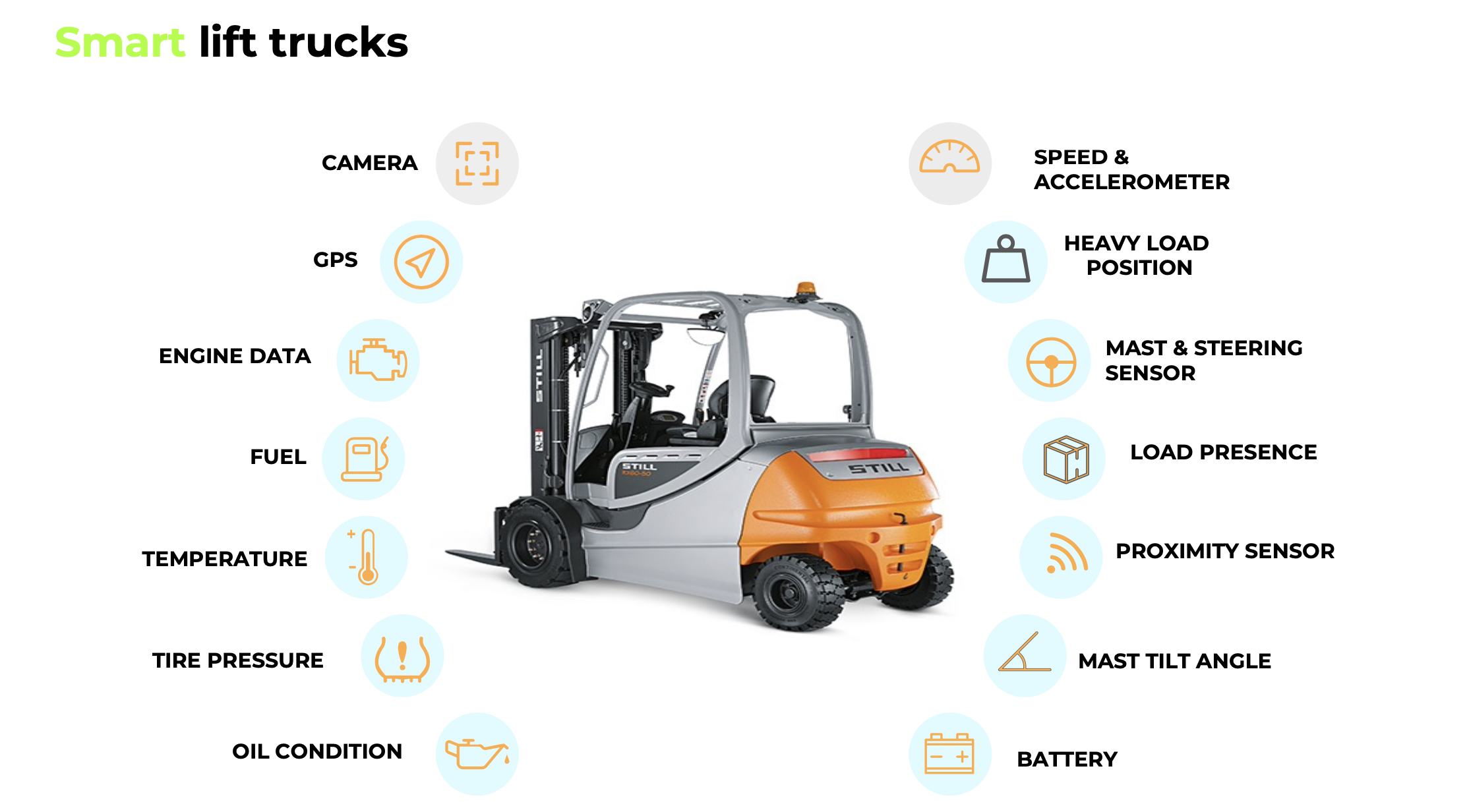
Data is at the core of the TVH business. TVH wants to be a data and event driven company for spare parts. TVH is actually one of the largest e-commerce companies in Belgium and has clearly entered the digital business. Thanks to IoT new machines come with a lot of data collection possibilities. Next to that big data has enabled predictive analytics and virtual reality can be very useful for field service.
GemOne has made the choice to do everything in Google Cloud. This native cloud choice was made with security in mind. Data is encrypted on the edge devices itself. GemOne sells raw and augmented data, dashboards and analytical platforms to its customers, not applications.
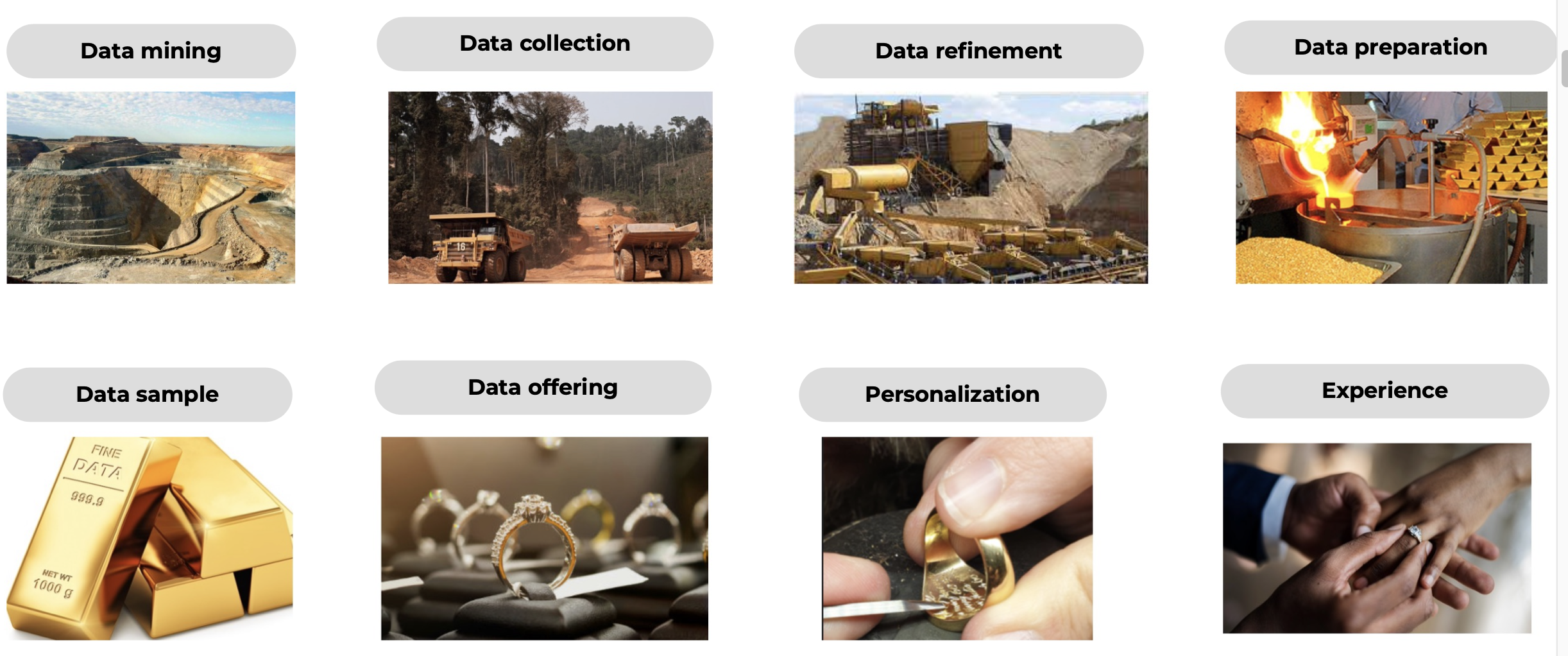
Kalman explained that there currently is a rush for data such as the rush for gold in the 18th century. It also follows a similar refinement and transformation process.

Bert Schoofs is global head of applications and Damien Imshoot is data scientist at Etex, a Belgian construction company, operating in more than 50 countries, trying to be the most sustainable in its industry, focusing on isolation and lightweight materials. Also in production processes Etex tries to sharply reduce energy and water consumption and CO2 emissions.
Two years ago Etex took the decision to move away from a SAP centric BI approach towards data lakes in Microsoft Azure, realising that they had multiple sources of data. Next to SAP, Etex also had data coming out of Salesforce, manufacturing execution systems, sensors, spreadsheets and other systems.
It took some time to build the required skills, refine the architecture and align all stakeholders. It took trial & error, building IT skills internally, investing in new technology components, running old (SAP BI) and new ways of working (Azure data lake) in parallel for several years. All in all it was a significant investment.
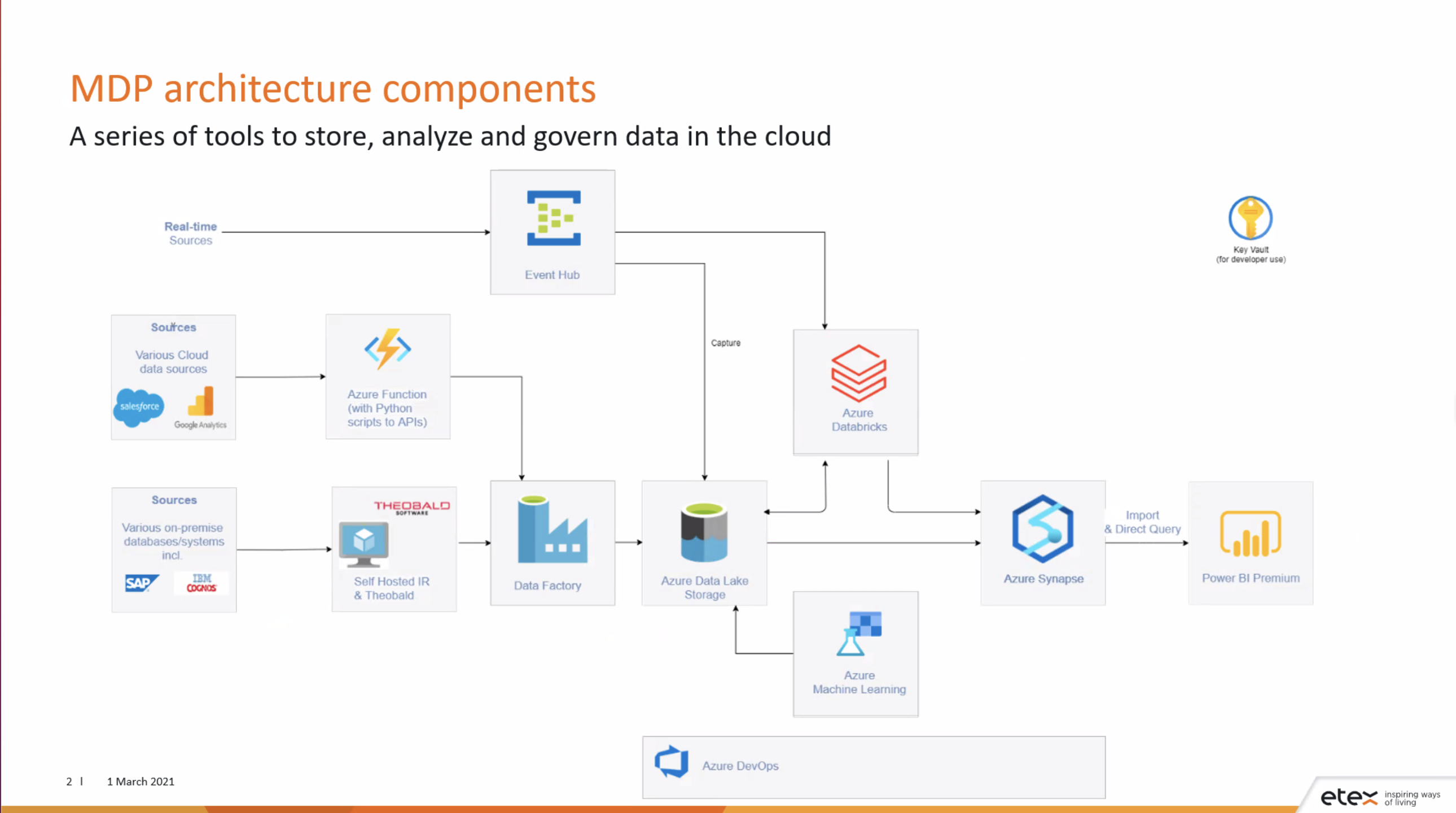
Damien explained one example where thanks to data analytics the replacement of expensive sanding belts on one machine was optimised. It also allowed to choose the right materials based on temperature and humidity.

